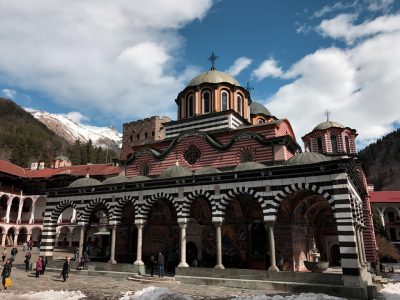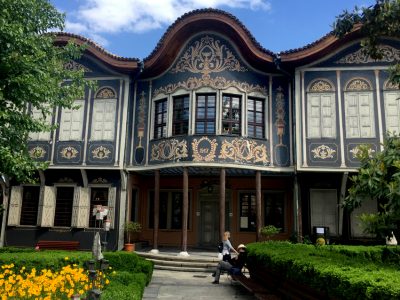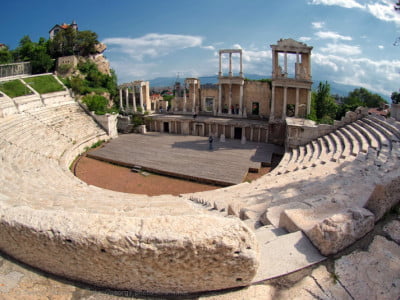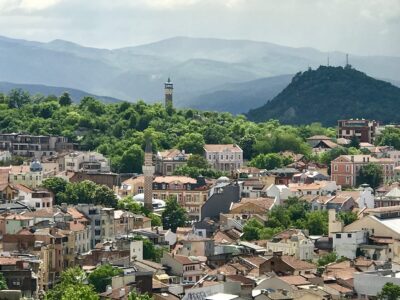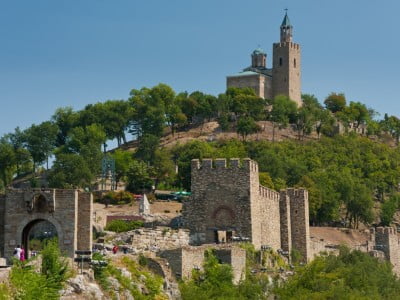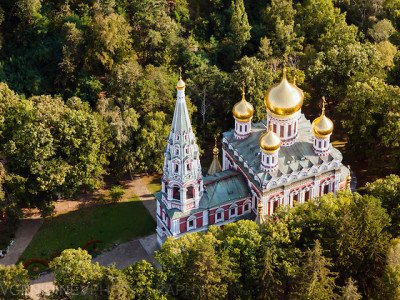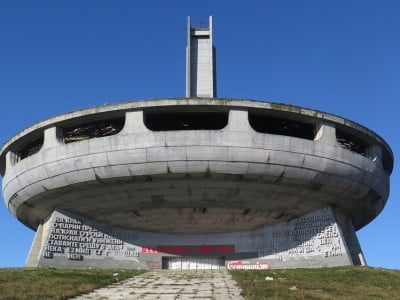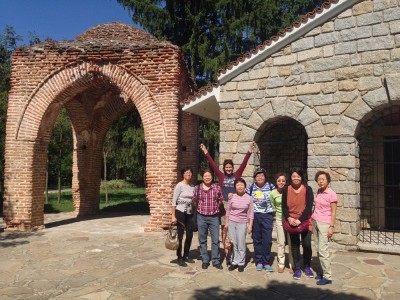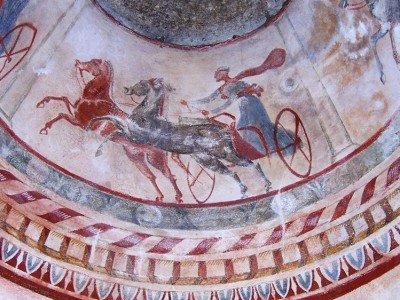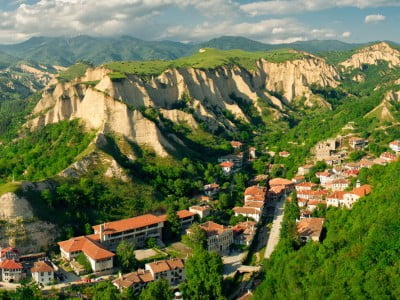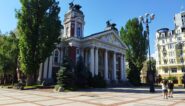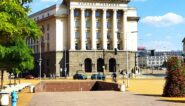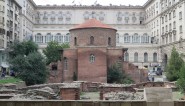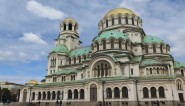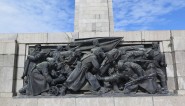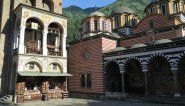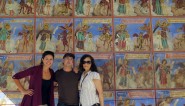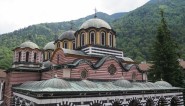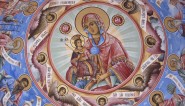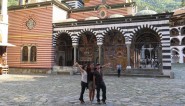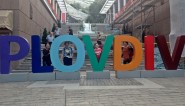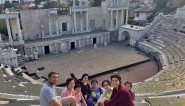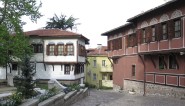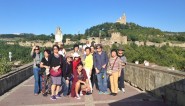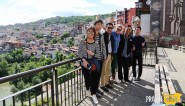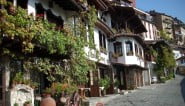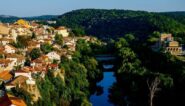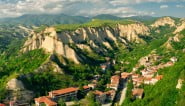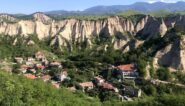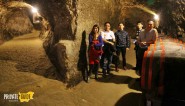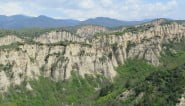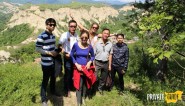3-Day Tour Itinerary in Bulgaria
3-Day Bulgaria Tour Itinerary
See the top places in Bulgaria during a long weekend
- Available throughout all seasons
- Plovdiv and Valley of Roses included in both itineraries
- English-speaking guide and a comfortable vehicle
⭐️⭐️⭐️⭐️⭐️ Top rated on TripAdvisor
Trip Summary
🗓️ Duration: 3 days/ 2 nights
🛬 Starting point: Sofia, Bulgaria
🛫 Finish point: Sofia, Bulgaria
☀️ Best period: January – December
🇬🇧 Tour language: English
🏢 Cities and villages included: 4
🏛️ UNESCO heritage sites: 2
🏰 Top attractions: Rila Monastery, Bachkovo Monastery, the Ancient theatre of Philippopolis, Thracian Tomb in Kazanlak, Buzludzha Monument, Tsarevets Fortress, Open Ethnographic Museum Etar
What You’ll See in Bulgaria in 3 Days
Explore all the most significant historic and cultural sites of Bulgaria in one long weekend. Your private 3-day cultural tour will include the stunning Valley of the Roses, the ancient splendor of the Kazanlak Thracian Tombs, and Rila Monastery – as well as the chance to see more modern sights such as Buzludzha Monument.
You’ll also have walking tours through some of Bulgaria’s most interesting cities. These include Plovdiv – the oldest inhabited city in Europe and European Capital of Culture – and the architectural reserve of Melnik with its Earth Pyramids.
Tour Itineraries for 3 Days in Bulgaria
Tour Itinerary #1: Rila monastery – Melnik – Plovdiv – The Rose Valley
| Day | Highlights | Overnight |
|---|---|---|
| Day 1 | Transfer from Sofia to Melnik with a stop at the Rila Monastery, optional wine-tasting | Melnik |
| Day 2 | Transfer to Plovdiv, walking city tour | Plovdiv |
| Day 3 | Visit the Valley of Roses and the Buzludzha Monument, and transfer back to Sofia |
See the full tour program
DAY 1: RILA MONASTERY AND MELNIK
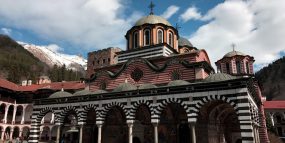
→ Transfer to the Rila monastery (2-2:30 hours)→ Guided tour of the monastery
Visit the Rila Monastery museum and complex→ Transfer to Melnik (the smallest city in Bulgaria, a.k.a. The Bulgarian Capital of Wine)
Sightseeing and wine tasting in a local winery (optional)
Overnight in Melnik
DAY 2: PLOVDIV
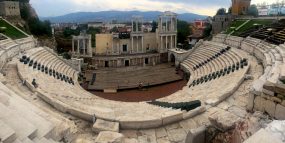
→ Walking city tour of Plovdiv
Visit The Old Town (dating from the 19th century); the exterior of the Ethnographic museum; Balabanov house; the Ancient theatre of Philippopolis; the Ancient stadium of Philipopolis; the St. Constantin and Elena church; the Djumaya Mosque and square; the building of the Regional Historical Museum; Saint Ludvik Cathedral; the Agara (Marketplace); the famous main pedestrian street; “The Trap” neighbourhood and Nebet Tepe.
→ Free time in Plovdiv in the afternoon
Overnight in Plovdiv
DAY 3: THE ROSE VALLEY AND BUZLUDZHA MONUMENT
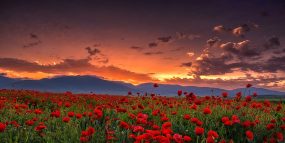
→ Visit the Rose Valley and the Kazanlak area
Explore the Thracian Tomb “Golyama Kosmatka” in Kazanlak
→ Stop for lunch in the Kazanlak area
→ Visit the Russian memorial church
→ Visit the Buzludzha Monument
→ Transfer back to Sofia (3-3.5 hours)
END OF THE TOUR
Tour Itinerary #2: Sofia – Veliko Tarnovo – The Rose Valley – Plovdiv
| Day | Highlights | Overnight |
|---|---|---|
| Day 1 | Walking city tour of Sofia, transfer to Veliko Tarnovo, and a visit to Tsarevets fortress | Veliko Tarnovo |
| Day 2 | Explore the Etar Ethnographic Complex, see Kazanlak and the Buzludzha Monument, and transfer to Plovdiv | Plovdiv |
| Day 3 | Walking city tour of Plovdiv, visit to Bachkovo monastery, and transfer back to Sofia |
See the full tour program
DAY 1: SOFIA AND VELIKO TARNOVO
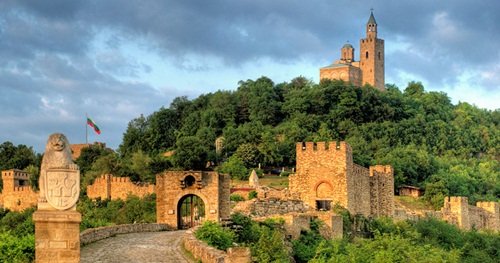
→ Walking city tour in the morning (2-3 hours)
Visit the: St. Nedelya square; Nedelya church; St Sofia Monument; St. Petka Church; The old Serdika Ruins; The mineral springs; The council of ministers; The Rotunda “Saint George”; The Presidency; The mosque “Banya Bashi”; The National archaeology museum (not going inside); The National Bank of Bulgaria; Knyaz Alexander Battenberg Square; The King’s palace; The Russian church; St. Sofia Church; The National Theater; The Monument of the “unknown soldier”; The Alexander Nevski Memorial Church; The city garden.
→ Transfer to Veliko Tarnovo after lunch (3 hours)
→ Visit the Tsarevets fortress and the craft street
→ Free time in Veliko Tarnovo for dinner
Overnight in Veliko Tarnovo
DAY 2:THE ROSE VALLEY
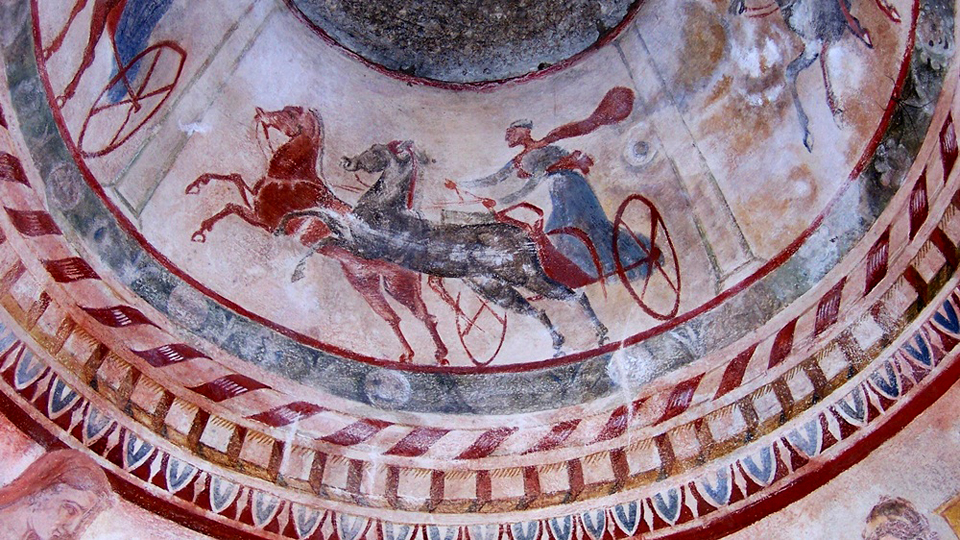
→ Transfer to the Etar complex
→ Explore the Ethnographic open-air museum
→ Transfer to the Rose Valley and Kazanlak area via Shipka Pass (1.5 hours)
Explore the Thracian tomb in Kazanlak or the Buzludzha monument
→ Transfer to Plovdiv (1:30- 2:00 hours)
Overnight in Plovdiv
DAY 3: PLOVDIV AND BACHKOVO MONASTERY
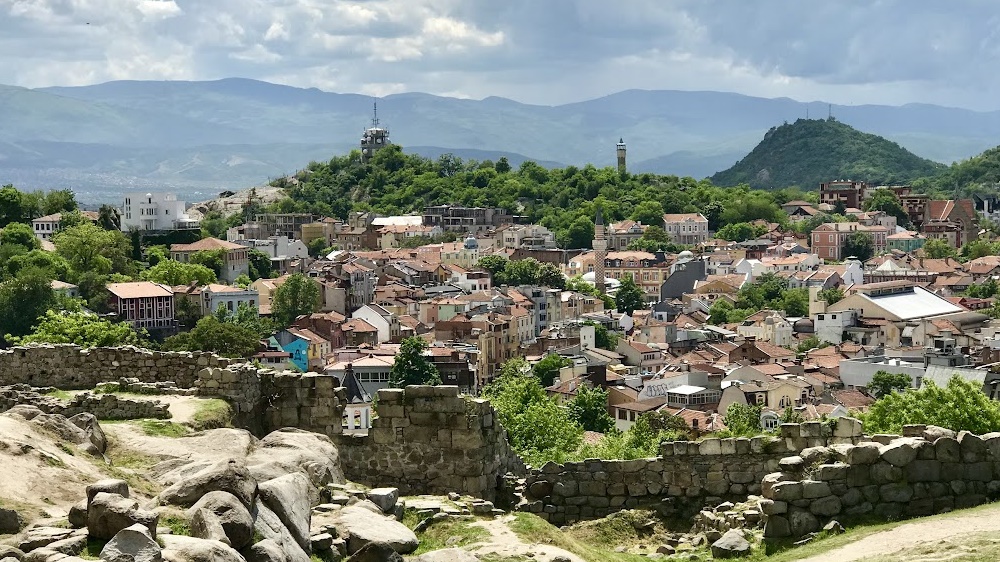
Visit The Old town from the 19th century; the Ethnographic museum (outside); Balabanov house; the Ancient theatre of Philippopolis; the Ancient stadium of Philipopolis, The St Constantin and Elena church, The Djumaya mosque and square, The building of the Regional Historical Museum, Saint Ludvik cathedral, Agara (Marketplace), the Main walking street, “The Trap” neighborhood; Nebet tepe)
→ Transfer to the Bachkovo monastery (40 min)
→ Explore the monastery complex
→ Transfer back to Sofia (2:30 hours)
→ Drop off at any location in Sofia
END OF THE TOUR
Let’s plan your weekend road trip across Bulgaria
Explore the must-see sights of Bulgaria and dive into its cultural heritage.
Send us your details to receive a custom quote.
What You Get During The 3-Day Tour
Cultural Insights
Opt for wine tastings and traditional Bulgarian cuisine for a real taste of local flavors. See historical treasures that range from ancient ruins to communist landmarks.
Local Knowledge
Your friendly, fully licensed English-speaking tour guide will bridge the language gap between you and the locals you’ll meet. They will also offer deep local insight and knowledge to lend colour to your trip.
Flexible Itinerary
We can easily tailor this tour around your dates and interests. Let us know if you would like to start and finish in different cities, add or remove an attraction, or add a day for rest.
Hassle-Free Transportation
Ride in your spacious, air-conditioned vehicle as you set times, destinations, and more! You will be free to add or remove stops to create your dream Bulgarian trip itinerary.
All fees included
The only things we don’t include are your food, drinks, and personal expenses. Everything else will be clearly described in your quote.
What People Say about Our Weekend Tour of Bulgaria
Adriana was very accommodating despite our rather last minute email to her with regards to a private guide.
The first two days, we travelled to Plovdiv/Bachkovo monastery and Veliko Tarnovo/Krushuna waterfalls. Our guide was enthusiastic, full of energy and very knowledgeable about history and various local points of interest.
Our third day to Rila Monastery was spent with another guide who was also very knowledgeable and gave us an insight into local history and culture.
Our first visit to Bulgaria was made memorable by all of you and we thank you for making us feel at home and comfortable.
More about Sofia
Sofia lies on important crossroads, which have contributed to its development as an important center and a site steeped in history. In antiquity, roads passed through it to link the Adriatic and the mid Europe with the areas around the Black Sea, the Aegean Sea, and reached as far as the Middle East. The area of Sofia was a busy hub of diverse activities, and it has remained the country’s most renowned center for trade, culture, and tourism. Several small rivers cross the city, and the larger Iskar River flows past its eastern complexes.
The abundance of mineral and thermal springs is an indubitable attraction for fans of spa vacations and restorative chillout. The number of springs totals 15, and the total flow rate of all springs is 130 liters per second. Added to the plentiful water sources are the artificial lakes and dams built in the last 60 years.
More about Rila Monastery
Rila Monastery is the most visited sight in Bulgaria, not only because it is part of the UNESCO list of precious heritage sights. It is scenically located in the upper section of the Rilska River basin, and above it rises the greenery-clad Rila mountain. The monastery’s founder was Ivan Rilski, who established it in the 10th century. The Rilska River flows past, and the Pastra village lies nearby. The imposing building of the monastery, dating from the 18th century, rises in five floors, four of which can be seen. That is a peculiarity which was necessitated during the building period, imposed by the Ottoman rulers. The museum is arranged on the ground floor.
One of the symbols of the Rila Monastery is the tower named after Hrelyo, a local ruler. It is the oldest preserved building in the whole monastery complex. On top of the tower, a chapel boasts precious 14th-century frescoes.
More about Plovdiv
Plovdiv is spread in the Thracian plain through which the Maritsa river flows at an unhurried pace. The city is split in two by the Maritsa. The Sredna Gora mountain hills rise on three sides, and the Rhodope mountain slopes tower on the south. The plain is cut by the valleys of several other rivers. The area proper of the city includes seven hills.
History fans will be aware of the significance of Plovdiv’s ancient background, because its age equals that of ancient Troy, boasting a history of about 6 millennia. In the 4th century BC, it was conquered by Philip of Macedonia, Alexander the Great’s father, and was named Philipopolis. In a later period, it altered its name to Trimontium, meaning “Three Hills”. In antiquity, Plovdiv was renowned as a crucial settlement; it retains its fame nowadays, welcoming not only traders but anyone eager to learn about Bulgaria by exploring it.
More about Veliko Tarnovo
Veliko Turnovo, huddled in the initial folds of the Balkan mountains, lures with its scenery and charm of old houses and streets. The Yantra river winds by, and can be seen from the town’s most picturesque Gurko Street, which leads visitors past olden time houses with unique architecture, with plenty of pots of scented flowers by the windows, and restaurants which offer delicious meals together with a view of the monument and the art gallery.
Veliko Turnovo is a university town. The Saints Cyril and Methodius University and the Vassil Levski Military University attract students from the whole country. But there is also a whole bouquet of sights. They dot the whole area of the old town. The Nativity Cathedral, the Tsarevets and Trapezitsa fortresses, and a number of old buildings built by eminent masters and turned into museums await everyone who appreciates learning about ancient history in picturesque settings.
More about Melnik
A visit to this tiny town is a journey into the past. The location of Melnik is serene; serenity is guaranteed in the smallest town in the whole of Bulgaria. The southwest folds of the majestic Pirin are a great background for the ancient-style houses. The transient Mediterranean climate augments the attracting power of all the advantages bundled in such a small place. Melnik is 22 kilometers away from Sandanski, the nearest town. The Melnik river murmurs its way through the town and emits freshness.
When it is time to tour the sights nearby, the Rozhen Monastery is one of the must-sees. It is easily reachable by taking a shortcut, so the enjoyment of walking is followed by the pleasure of visiting the holy place. The path passes by the natural phenomenon, the Melnik Pyramids, considered one of its symbols. The pyramids are about 100 meters high and in places are almost vertical.

